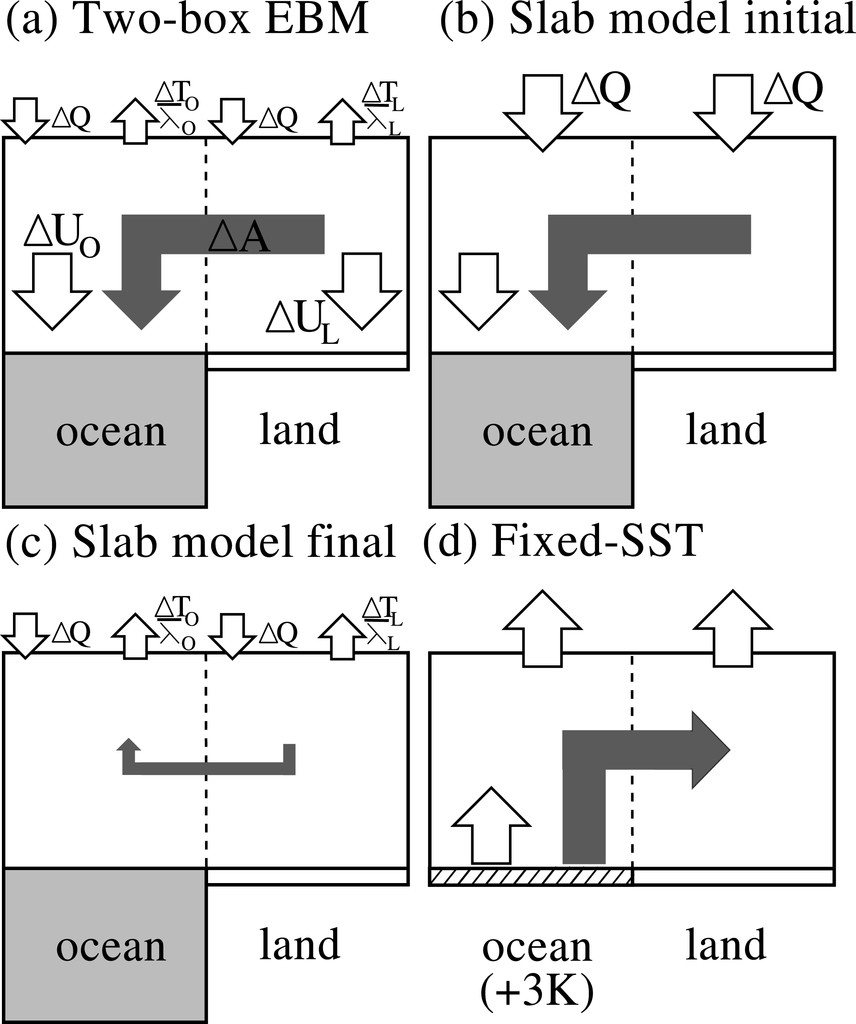Land-sea contrast

Under quite globally uniform forcing, surface temperature responses behave like local responses to the global mean radiative forcing, even away from equilibrium. In models, this means that simulated patterns of temperature change look similar under different forcing scenarios. In the real world, it means that land and ocean temperatures continue to increase in a constant ratio that we do not expect to change if warming accelerates or if it slows down. This is true even though the land shows a much smaller heat capacity to climate change than the ocean.
The constant ratio and similar patterns occur because the atmosphere is very good at transporting heat, particularly around a latitude circle. This makes detecting the influence of poorly understood regional aerosol forcings difficult, because their influence is not strongly regionally confined. Regional forcings do have slightly different temperature signatures, however, even large-scale sulphate aerosol forcing, as Manoj Joshi convinced me.
This means that one can detect regional forcings (old news, I know), although surface temperature response might not be the best way to go about it. In fact, it might be the atmospheric energy transport that we should be trying to trace, perhaps through its impact on the hydrological cycle. This is part of the reason Joe Osborne looked at aerosol impacts on European rainfall.
The flipside of all this, is that solar radiation management geoengineering< schemes that rely on regional forcing or forcing that doesn’t have the same spatial signature as CO2 forcing will work. Because they will stimulate changes in atmospheric energy transport, however, they might stimulate nasty or at least unpredictable changes in the hydrological cycle.